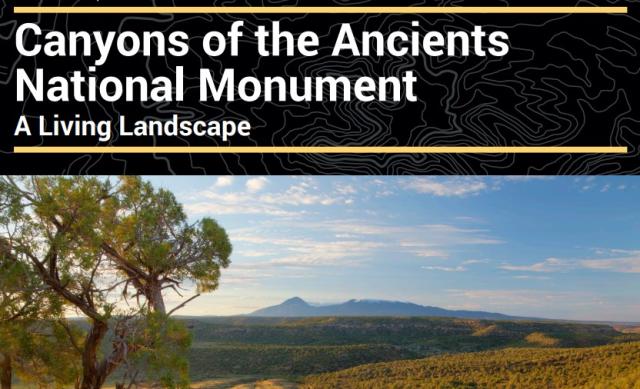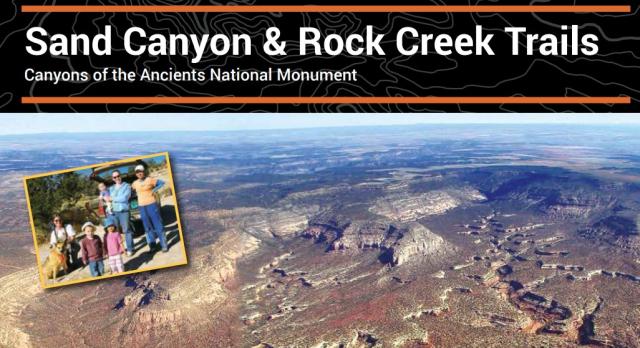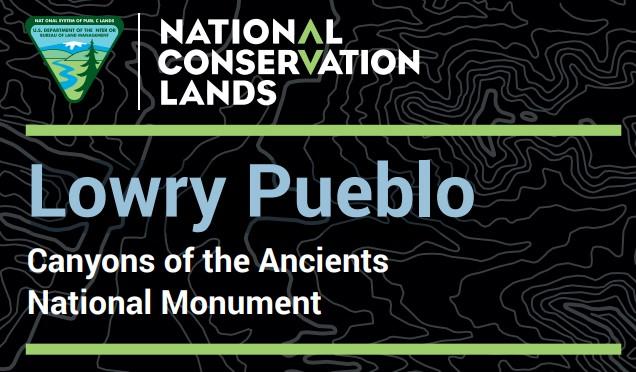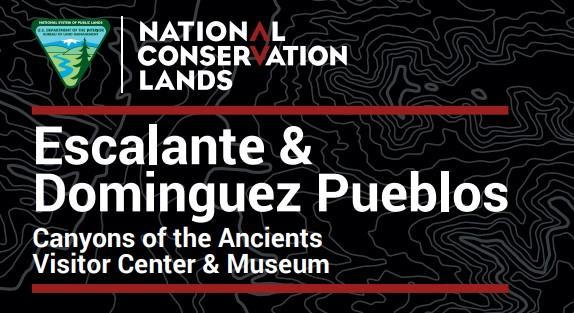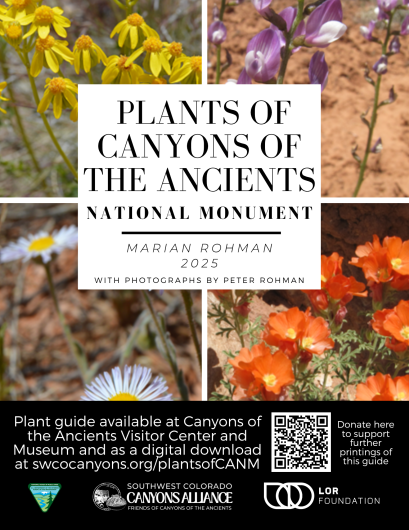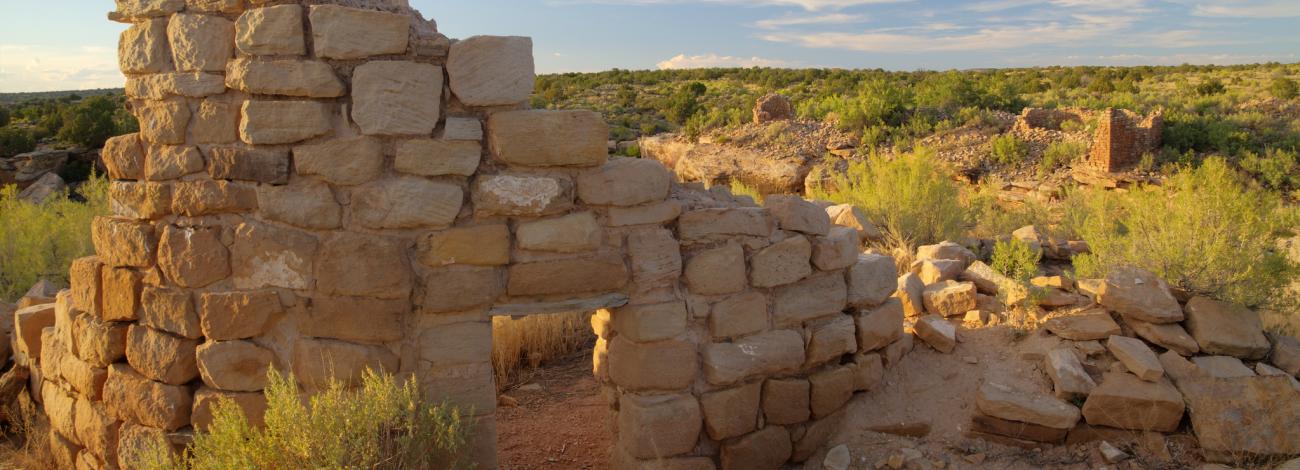
Learn and Explore
Canyons of the Ancients National Monument, located in Colorado’s Great Sage Plain, is a vast landscape rich in both natural and cultural history. For thousands of years, this high desert plateau supported thriving ecosystems and Indigenous communities including the Ancestral Puebloans, whose architectural and agricultural legacies still mark the land. Centuries of human presence—from early farming societies to Spanish explorers and later settlers—have left a wealth of archaeological evidence, much of it preserved through efforts like the Dolores Archaeological Program.
Today, the Monument remains a living cultural landscape for 26 Tribes and Pueblos, where ancient villages and diverse plants and wildlife coexist against a backdrop of dramatic mesas, canyons, and sacred peaks.
- Plants of Canyons of the Ancients National Monument
A plant guide is available at Canyons of the Ancients Visitor Center and Museum and as a free digital download at swcocanyons.org/plantsofCANM
- The Great Sage Plain
Canyons of the Ancients National Monument is located in the Great Sage Plain – more than 1,500 square miles of high, dry plateau, carved by canyons. The wind-deposited soil supports sagebrush and pinon/juniper forests and have been used for dryland farming for thousands of years. On the southern horizon is the Ute Mountain, sacred to the Ute Mountain Ute Tribe, and the mesas of Mesa Verde National Park. The Abajo and La Sal mountains rise to the northwest in Utah. To the east, you can see Lone Cone and the San Juan Mountains.
A variety of wildlife live in the Monument including large animals (black bear, mountain lion, elk, deer, etc.), small animals (rabbits, squirrels, bats, foxes, etc.), birds (various raptors, grouse, owls, flycatchers, etc.), reptiles (lizards, snakes-including rattle snakes), amphibians (frogs, toads, salamanders) and fish (minnows, suckers, sunfish etc.).
- Ancestral Puebloans
Ancestral Puebloans lived in the region now known as Canyons of the Ancients for centuries, developing complex communities and a deep relationship with the land. They farmed staples such as corn, beans, and squash, and supplemented their diets with wild plants and small game like rabbits and deer. Skilled in toolmaking, they crafted implements from stone, bone, and wood for hunting, food preparation, and building.
The remains of their villages still dot the landscape, featuring finely crafted stone masonry, underground spaces called kivas, multi-room dwellings, towers, and plazas. In some areas there are over 100 cultural sites per square mile, some with standing walls and others resembling rubble mounds or depressions in the earth. The descendants of these early inhabitants continue to maintain physical, cultural, spiritual, and ancestral ties to the region.
- Pueblos Recommended for Visitation
DOMINGUEZ PUEBLO (at Canyons of the Ancients Visitor Center)
Tree-ring dates in wood from the site tell us the Dominguez Pueblo was built about AD 1123 – close to the same time as the Escalante Pueblo. This four-room structure was a typical family unit for four to eight people. Traces of 14 similar household sites have been found on the hill surrounding the Escalante Pueblo.
Dominguez Pueblo is an example of the common household style of the North San Juan Tradition: a row of small rooms facing a kiva or circular underground chamber. The kiva, no longer visible, was about 11 feet (3.3 m) in diameter. It was not possible to stabilize the earthen walls of the kiva, so it was backfilled after excavation in the 1970s.
ESCALANTE PUEBLO (0.5 mile from Canyons of the Ancients Visitor Center up Escalante Pueblo Trail)
Escalante Pueblo’s original construction reflects the architectural style of Chaco Canyon, New Mexico.
Archaeologists from the University of Colorado excavated about one-third of the Escalante Pueblo in 1975-1976. Based on the age of wood used in its construction, archaeologists believe the pueblo was built or remodeled in three episodes.
The pueblo’s founders built the original structure in AD 1129. Most of the pottery found here is not Chaco-style but Northern San Juan (local) types. This first occupation ended about nine years later. Another group of Northern San Juan people briefly occupied the pueblo around AD 1150. A third and final occupation, involving only a few rooms, took place around AD 1200.
PAINTED HAND PUEBLO (33 miles from Canyons of the Ancients Visitor Center)
Built in the AD 1200s, Painted Hand Pueblo was a small village of about 20 rooms that still include faint rock images and petroglyphs. The designs of the ancient images have special meaning to Tribal descendants. In 2014, the Painted Hand Pueblo was placed on the National Register of Historic Places.
LOWRY PUEBLO (25 miles from Canyons of the Ancients Visitor Center)
Lowry Pueblo is a 1,000-year-old Ancestral Puebloan village named after George Lowry, an early 20th century homesteader. Lowry Pueblo was built on top of the houses of an earlier community around AD 1060 and inhabited for about 165 years. Lowry Pueblo began as a small village with a few rooms and a kiva. Several more rooms, the Great Kiva, and Kiva B (the painted kiva) were added between AD 1085 and 1170. By the time the last families left and migrated south and east, the pueblo had 40 rooms, eight kivas, and a Great Kiva.
Dr. Paul S. Martin of the Chicago Field Museum of Natural History excavated Lowry Pueblo in the 1930s. In 1965, the BLM and the University of Colorado stabilized the masonry walls. In 1967, Lowry Pueblo was dedicated as a National Historic Landmark. Although the masonry was repaired for preservation and safety, Lowry looks much as it did when it was originally excavated.
SAND CANYON PUEBLO (20 miles from Canyons of the Ancients Visitor Center)
About AD 1250, families came together around the head of Sand Canyon to build a large and compact village. A thick, one-story tall, U-shaped wall surrounded hundreds of square rooms, round kivas, and community structures including a plaza, a large D-shaped structure, and a great kiva.
A spring was at the heart of the village, giving residents exclusive access to a water source. By AD 1275, Sand Canyon Pueblo was about three times the size of Cliff Palace (the largest pueblo in Mesa Verde National Park).
- Dolores Archaeological Program
The Dolores Archaeological Program was a large-scale research initiative conducted in the 1970s to document and preserve archaeological sites in the Dolores River Valley before the construction of the McPhee Reservoir. The program uncovered thousands of artifacts and provided invaluable insights into the prehistoric and historic cultures of the region, contributing significantly to our understanding of the Ancestral Puebloans and their predecessors.
During six field seasons (1978-1983), Dolores Archaeological Program archaeologists surveyed and recorded 1,626 archaeological sites on 16,000+ acres in the project area. They fully excavated 125 sites and collected more than 1.2 million artifacts--including historic glass bottles, a prehistoric bone tool kit, and thousands of ceramic vessels and fragments (sherds). Maps, photos and records generated by the program provide a vast knowledge base that otherwise would have disappeared forever.
As a part of the overall project, the Canyons of the Ancients Visitor Center and Museum was constructed to preserve both the artifacts and records in perpetuity. The Canyons of the Ancients Visitor Center and Museum is an official federal repository for archaeological materials, which continue to arrive from permitted, legitimate excavations in southwest Colorado.
- The Dominguez-Escalante Expedition
In July 1776, a party of Spanish explorers – Father Silvestre Velez de Escalante with his superior Francisco Dominguez and eight others – set out from Santa Fe, New Mexico to find a safe route to California and avoid the Mohave Desert and Grand Canyon.
After several weeks, they camped by a river called El Rio de Nuestra Señora de Los Dolores (The River of Our Lady of Sorrows). Father Escalante found the remains of a village overlooking the river and wrote in his journal that it resembled the living Pueblo villages of New Mexico. It became the first archaeological site documented in present-day Colorado, later named Escalante Pueblo. Two hundred years later, the Dominguez Pueblo was excavated and named.
In the Dolores area, the Spaniards first encountered Ute hunters, who fed them and guided the party for several months. Due to the lack of food and the approach of winter, the explorers abandoned their goal and returned to Santa Fe. Though unsuccessful, the expedition established part of the Old Spanish Trail for later trade between the United States and Mexican territories.
- Wild Horses and Burros
The Tres Rios Field Office is home to wild horses and burros, which roam its rugged landscapes as part of the region's diverse ecosystem. Descendants of domesticated animals brought by settlers and explorers, these animals offer a living connection to the region's historical and cultural heritage. Their presence on the landscape today serves as a reminder of the area's rich history and the nation’s western expansion. This video provides additional information wild horse and burro management and adoption programs.

